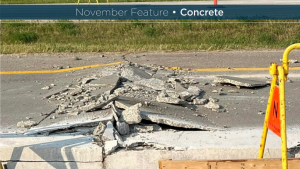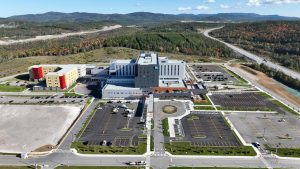Alberta’s back in the game and Ontario is bullish, delegates attending a panel discussion on provincial P3 initiatives heard at the Canadian Council for Public-Private Partnerships conference.
Four provincial cabinet ministers joined moderator Perrin Beatty, president and CEO of the Canadian Chamber of Commerce at the Nov. 19 session.
Beatty asked Ontario Minister of Infrastructure Laurie Scott, Alberta Minister of Infrastructure Prasad Panda, Saskatchewan’s Minister Responsible for SaskBuilds Gordon Wyant and Nova Scotia Minister of Transportation and Infrastructure Renewal Lloyd Hines to lay out their plans for P3 infrastructure for the Canadian and international P3 stakeholders gathered at the conference.
Panda had mixed messages. While the new Alberta government under Premier Jason Kenny has clearly sent the message it is embracing the P3 model after an abeyance of four years during the term of former NDP Premier Rachel Notley, the United Conservative Party is also committed to cutting Alberta’s deficit.
“I’m proud to say Alberta is back at the P3 table,” Panda said.
He acknowledged the province’s finances presented challenges — the latest fiscal update in October pegged Alberta’s deficit at $8.7 billion for the fiscal year ending next March 31 — but the government is nonetheless setting aside $24.2 billion through to 2023 for such “critical infrastructure” as health care projects, roadways and affordable housing, he said.
We love P3s. They have a record of being on time and on budget and driving innovation,
— Laurie Scott
Ontario Minister of Infrastructure
Panda came to the P3 conference with the province’s minister of transportation, he said, “to tell our P3 partners we are very keen and interested in engaging them in the coming months.”
Ontario’s Scott arrived at the mid-morning panel fresh from unveiling a series of reforms to Infrastructure Ontario procurement practices at an earlier session. She told delegates the province plans to spend $65 billion on P3 projects in the next 10 years.
The highest priorities are Toronto transit projects, Scott said, with five “marquee” subway or LRT builds in the pipeline. The Ontario Line, just announced in April and slated for completion in 2027, has an estimated $11-billion price tag.
“We love P3s,” Scott said. “They have a record of being on time and on budget and driving innovation.”
Wyant of Saskatchewan pointed to a just-completed major bypass of Regina undertaken by a P3 consortium and a P3 school-bundling program as evidence of that province’s commitment to the model.
Saskatchewan’s economy is highly export-dependent, Wyant said, so future projects would ensure the province can get its goods to market.
Hines said, “small but mighty” Nova Scotia was also committed to P3s, though the model has been criticized by some in the province. In 2017 the Province bought back 10 schools that had been developed by P3 developers. Future P3 projects will target health care facilities, Hines said, noting his government believes P3s are a valuable tool in stretching tax dollars.
Responding to a question from Beatty asking why their provinces are good places for P3 stakeholders to invest, Scott used her government’s just-announced P3 reform package as a selling point.
“Ontario has a reputation as a leader in the P3 market,” said Scott.
“We have a government that is willing to listen and make changes and react to what the marketplace globally and in Ontario needs.
“We are cooperative, we are aggressive. We’d love to have you invest in Ontario.”
Saskatchewan will also show flexibility in procurement, Wyant said. The province needs to collaborate on P3s and so it is a “willing partner” in discussions of risk transfer, he said.
Panda reiterated the message that Alberta has lots of work in its P3 pipeline and is willing to invest in infrastructure. “Alberta is pro-growth,” he said, and is “excited” to be back as a P3 player.
Responding to another prompt by Beatty, all four provincial ministers agreed they hoped the incoming federal infrastructure minister would stay the course with the existing Liberals’ Investing in Canada Infrastructure Program. Wyant, though, said his province would be sending the message that more flexibility is needed because “one size doesn’t fit all” and Saskatchewan’s needs are not for transit funding but rather for other community infrastructure.











Recent Comments
comments for this post are closed